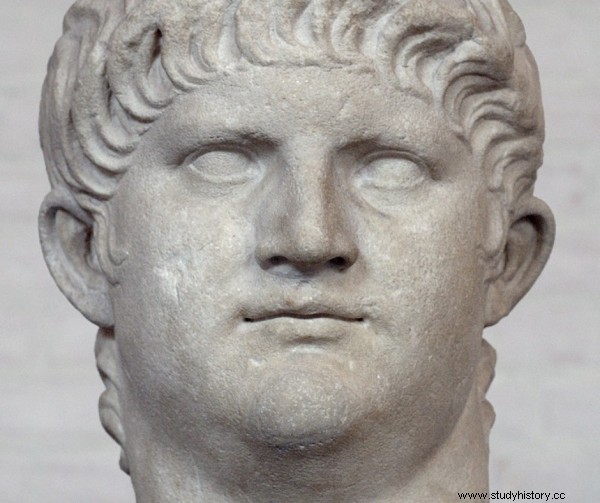Nero
 Ancient Roman Emperor from AD 54, when his stepfather Claudius died. He was born on December 15, 37. He was the son of Agrippina the Younger, the fourth wife of Claudius and Gnaeus Domitius, a pupil of Seneca the Younger. He began his reign with the restoration of powers to the senate and consuls. Initially, Nero was strongly influenced by his mother, which was opposed by Seneca and the praetorian prefect Afranius Burrus.
Ancient Roman Emperor from AD 54, when his stepfather Claudius died. He was born on December 15, 37. He was the son of Agrippina the Younger, the fourth wife of Claudius and Gnaeus Domitius, a pupil of Seneca the Younger. He began his reign with the restoration of powers to the senate and consuls. Initially, Nero was strongly influenced by his mother, which was opposed by Seneca and the praetorian prefect Afranius Burrus.
She later fell out with her son, partly over state affairs, partly because of Nero's mistress named Acte. After Agrippina stated that she could take power from her son in favor of the son of Claudius Briton (whose sister Octavia Nero had married), she was removed from the palace, and Nero allowed the Briton to be poisoned in AD 55. In 59, in agreement with Seneca and Burrus, he ordered the murder of Agrippina. The official version stated that Nero was saved from the conspiracy.
Nero's next mistress was Sabina Poppaea. Her husband Marcus Salvinius Otho was sent to Lusitania as governor. In AD 62, Nero divorced his wife and married Sabina. Octavia was exiled, then accused of adultery and murdered. In turn, in 65, Nero beat a pregnant Sabina, and as a result she died.
On July 19-28, 64, a fire consumed a large part of Rome. While in Antium, Nero came to organize help. It was rumored that he himself had set fire to Rome, so Christians, many of whom died in the Emperor's circus, were identified as guilty. In 68 AD, Gaius Juliusz Windeks, governor of Gaul of Lugden, launched an uprising against Nero. He was joined by Galba, governor of Spain, who was recognized as emperor by the senate. Nero, recognized as a public enemy, committed suicide on June 9 saying the words "What artist is dying with me."
